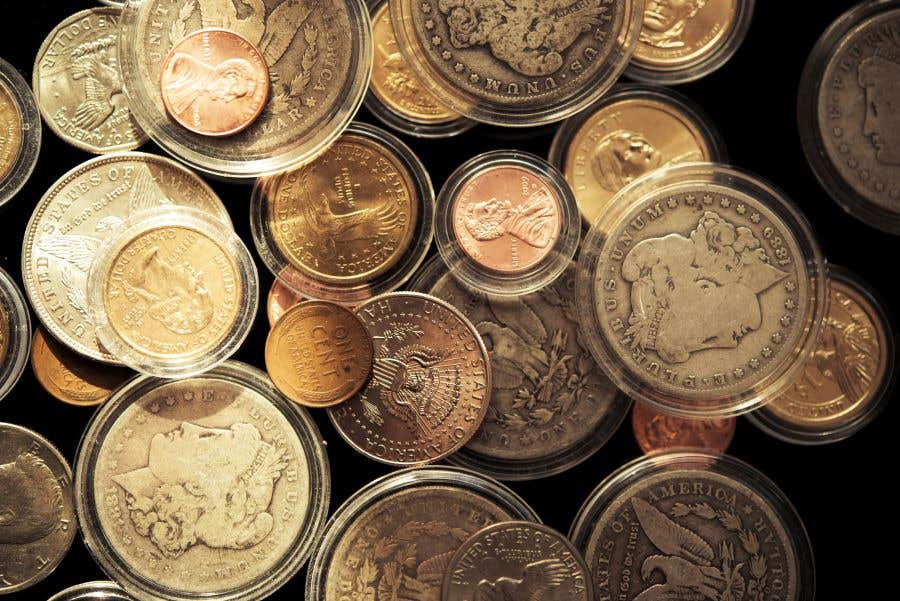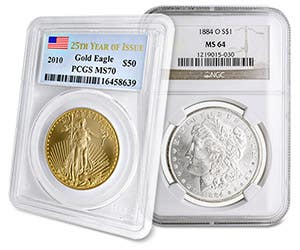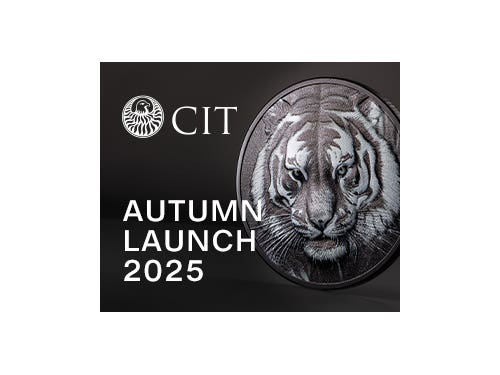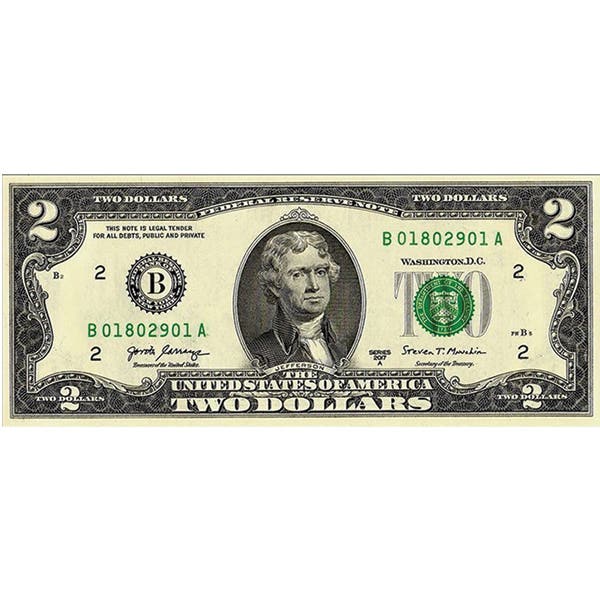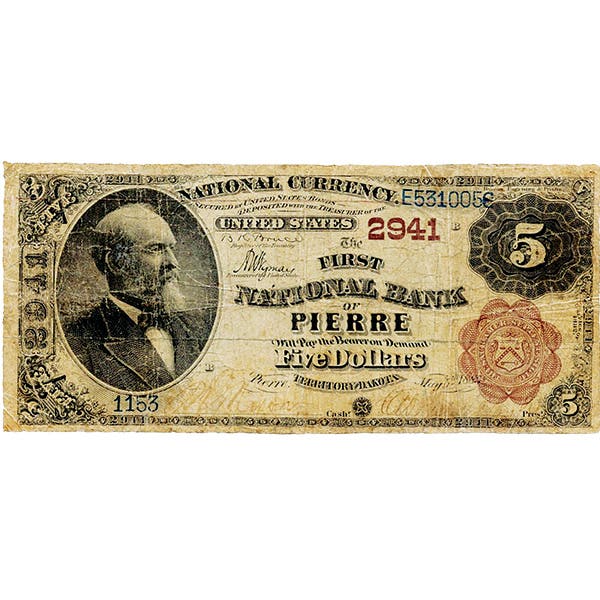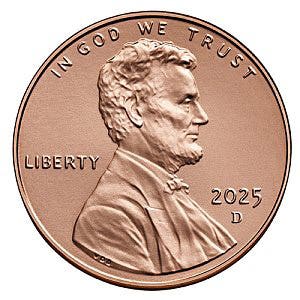Paquet $20s rare from Philadelphia
Can you explain what a Paquet coin is and how often such coins were struck? United States Mint Assistant Engraver Anthony Paquet used the font now bearing his name on…
Can you explain what a Paquet coin is and how often such coins were struck?
United States Mint Assistant Engraver Anthony Paquet used the font now bearing his name on some of his 1860 $20 double eagle gold coin patterns. The Paquet font uses tall, thick vertical and diagonal lettering with thin horizontal and serif characteristics. Philadelphia Mint double eagle coins using this font were never released, with just two examples extant in collector hands. There are 1861-S double eagles on which this font appears on the reverse.
Prior to 1792 individual states were permitted to issue their own coins. Where exactly did this right originate?
According to Article IX of the Articles of Confederation, “The United States in Congress assembled shall also have the sole and exclusive right and power of regulating the alloy and value of coin struck by their own authority, or by that of the respective states – fixing the standard of weights and measures throughout the United States.”
If prior to the U.S. Constitution and the law establishing a U.S. Mint in 1792 states could issue their own coins, why did they issue coppers?
Practicality indicated the equivalent of British penny and halfpenny coin denominations would fill most needs in commerce. Any silver coins that might be required were likely available from Spanish colonial America at that time.
Federal coinage legally replaced all state coinage in 1793. How did several states justify the legality of Territorial gold coins?
Territorial gold coins are called private or pioneer coins for a reason. While these issues copied the weight, purity, and occasionally the designs of our federal gold coins they were issued by individuals rather than the states. The Private Coinages Act of 1864 ended the practice.
Why did fractional gold coin issues continue to be produced in California through 1882 despite the Private Coinages Act of 1864?
Today there are sanctuary cities protecting illegal aliens. California was a “sanctuary state” in that it failed (likely ignored the law) to enforce federal laws prohibiting the private issue of coins. Col. Henry Finnegass of the Secret Service clamped down on this in early 1883.
Our short-lived 20-cent coin was struck during the latter part of the 19th century. Why wasn’t this considered rather than a quarter when our coinage system originated?
It was considered at that time. The Grand Committee of 1785 reviewing Thomas Jefferson’s plan for a coinage system dropped Jefferson’s suggestion of a double tenth in favor of a quarter dollar coin. There was a certain logic on Jefferson’s side, but the logic of the marketplace where Spanish milled dollar coins were sometimes cut in half and then halved again to get a quarter part triumphed.
I recently encountered a survivalist who collects gold and silver coins for when the world economy collapses. What is your take on what would happen if our money became worthless worldwide?
I don’t personally believe the world economy will collapse and we will revert to a specie coinage and barter economy. Do you really believe some grocer or other merchant is going to trade a reasonable amount of useful goods in exchange for a gold coin in such economic conditions? The value of the coin is unwieldy and too unpredictable to be useful as spending money.
Can you elaborate on what free coinage is?
Free coinage is the unrestricted coinage of bullion or any specified metal into money for any person bringing it to the Mint, either with or without charge for the minting service. This was a practice dating from ancient times.
E-mail inquiries only. Do not send letters in the mail. Send to Giedroyc@Bright.net. Because of space limitations, we are unable to publish all questions.
This article was originally printed in Numismatic News. >> Subscribe today.
More Collecting Resources
• More than 600 issuing locations are represented in the Standard Catalog of World Coins, 1701-1800 .
• Is that coin in your hand the real deal or a clever fake? Discover the difference with U.S. Coins Close Up, a one-of-a-kind visual guide to every U.S. coin type.




